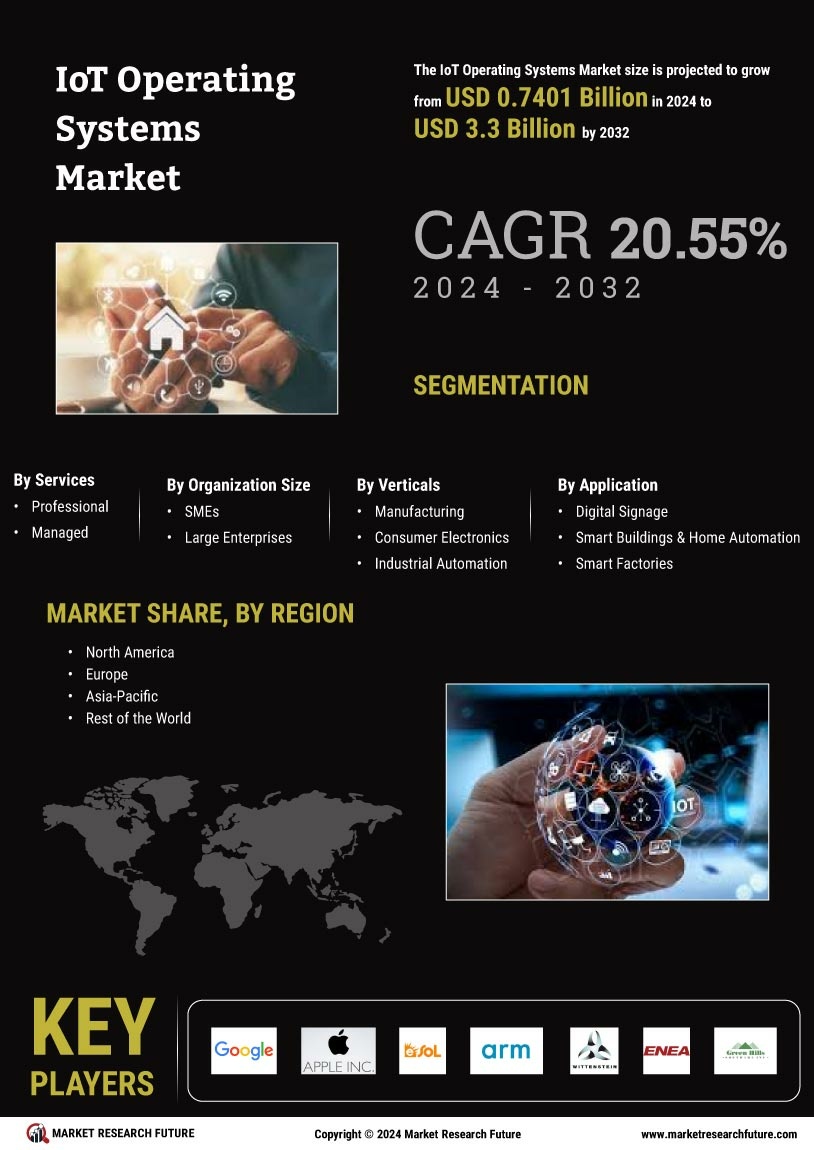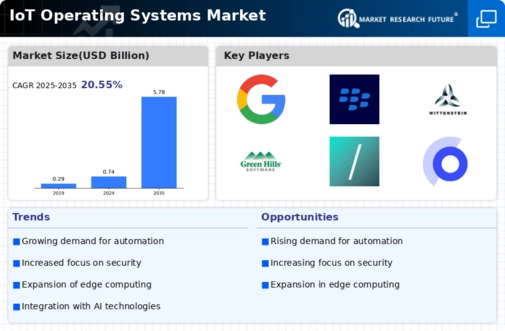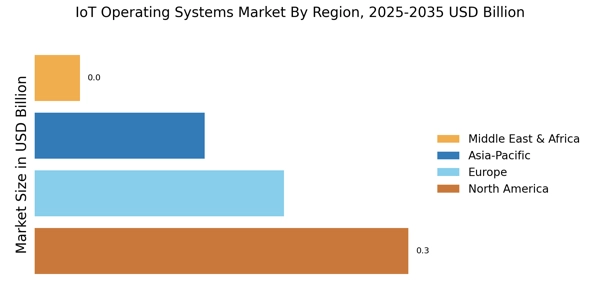IoT Operating Systems Market Summary
As per Market Research Future analysis, the IoT Operating Systems Market Size was estimated at 0.7401 USD Billion in 2024. The IoT Operating Systems industry is projected to grow from USD 0.8922 Billion in 2025 to USD 5.784 Billion by 2035, exhibiting a compound annual growth rate (CAGR) of 20.55% during the forecast period 2025 - 2035
Key Market Trends & Highlights
The IoT Operating Systems Market is poised for substantial growth driven by technological advancements and increasing demand for smart solutions.
- The market exhibits an increased focus on security measures to protect connected devices and data.
- Interoperability and standardization are becoming critical as diverse IoT devices proliferate across various sectors.
- The integration of AI and machine learning is enhancing the functionality and efficiency of IoT operating systems.
- Rising demand for smart devices and advancements in edge computing are key drivers propelling market expansion, particularly in North America and the Asia-Pacific region.
Market Size & Forecast
| 2024 Market Size | 0.7401 (USD Billion) |
| 2035 Market Size | 5.784 (USD Billion) |
| CAGR (2025 - 2035) | 20.55% |
Major Players
Microsoft (US), Amazon (US), Google (US), IBM (US), Oracle (US), Siemens (DE), Samsung (KR), Cisco (US), Bosch (DE), Huawei (CN)


















Leave a Comment